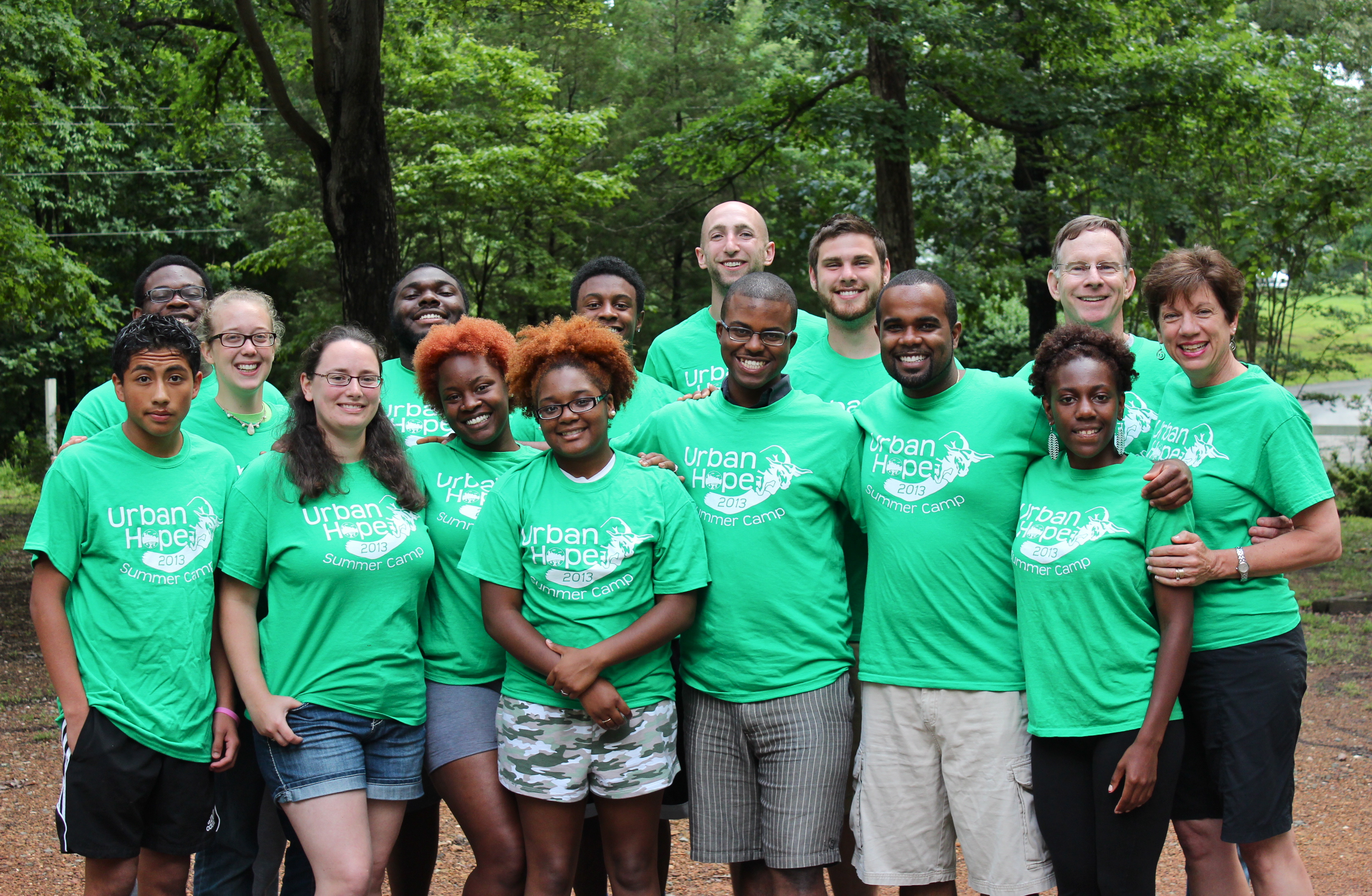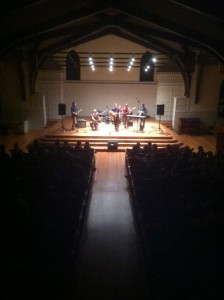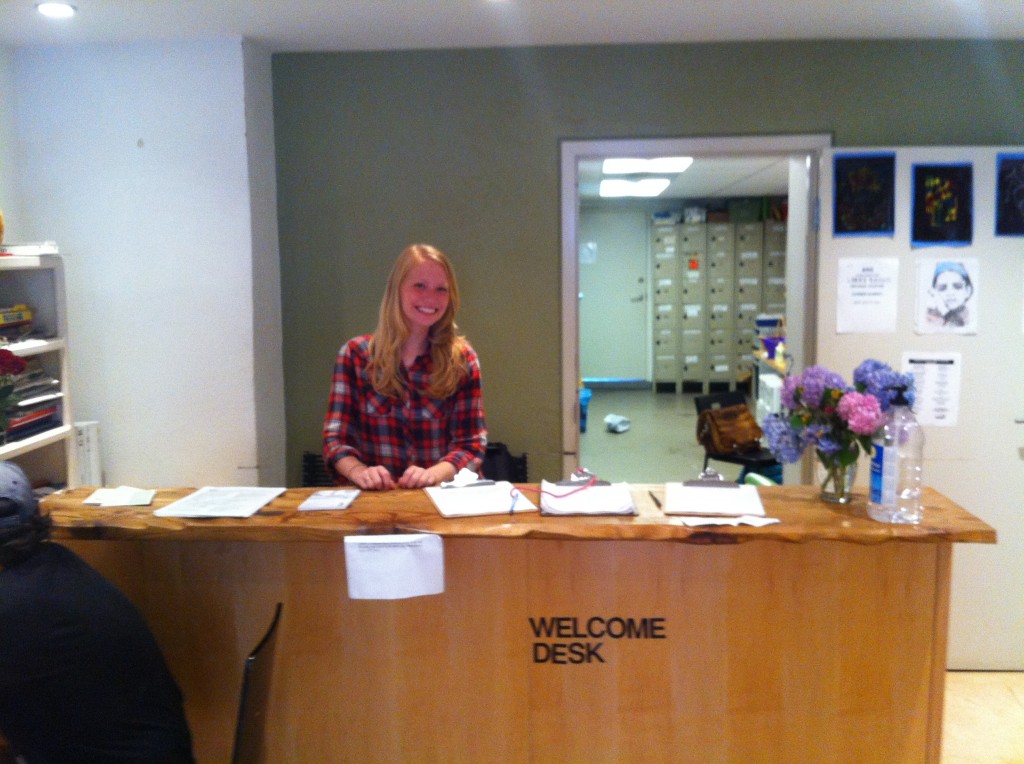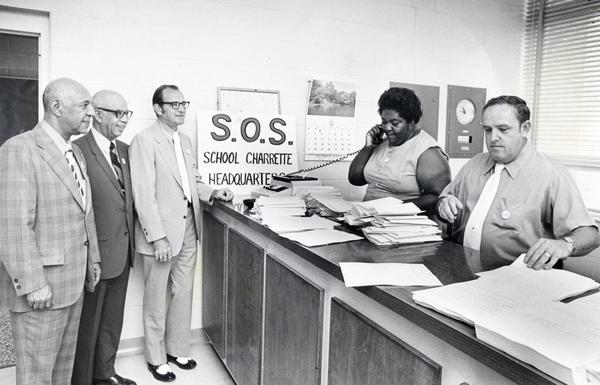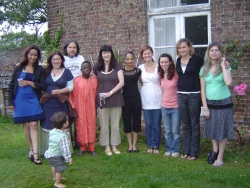I was introduced to the Catholic Worker movement a couple of years ago when I visited Casa Alma in Charlottesville, a Catholic Worker community started by Laura and Steve Brown in 2009. This initial encounter prompted inquiry into the history of the Catholic Worker and the surprising discovery of the community directory listing hundreds of houses worldwide. According to their website, the Catholic Worker is a movement whose aim is to live “in accordance with the justice and charity of Jesus Christ” which they see as a requirement “to begin living in a different way.”1 Due to this different kind of living, the Catholic Worker movement is often regarded as “radical,” a term I would like to unpack. Is the Catholic Worker a radical way in which to practice Catholicism? Is a Catholic Worker lifestyle simply radical in relation to that of mainstream society? Initially I thought acts of civil disobedience or ploughshares (in which military or nuclear equipment and weapons are damaged) were the more radical aspects of the Catholic Worker movement, because they can often result in arrests, trials in court, and prison sentences. Though acts of civil disobedience are certainly bold ways to proclaim beliefs in the public sphere, I am discovering that the radical core of the Catholic Worker movement consists more so of small, relational practices carried out with the conviction that they can transform society.
Author Dan McKanan in Prophetic Encounters: Religion and the American Radical Tradition places the Catholic Worker within the tradition of American radicalism, which he defines as “a tradition of social movements and organizations that seek to extend the values of liberty, equality, solidarity, and peace” (5). McKanan relates radicalism to religion as a brother or sister, as a perspective more concerned with relationships amongst people rather than spiritual or material realities; one that still hopes for societal change beyond the institutional level but looks to the future rather than to the transcendent. He notes however, that often a religious faith is strongly linked to the belief that one can renew the earth; a radical belief indeed. This proved to be the case for Dorothy Day, whose “revelatory experiences of interpersonal encounter confirmed the truths of biblical revelation” (8).
“To be radical is to go to the roots,” writes Peter Maurin, co-founder of the Catholic Worker movement, in one of his Easy Essays (18). At the core of the Catholic Worker is the commitment to practice the corporeal and spiritual works of mercy, which has a clear rooting in the New Testament, in the Gospel of Matthew. The passage in Matthew 25 reads,
Then the king will say to those on his right, “Come, you who are blessed by my Father. Inherit the kingdom prepared for you from the foundation of the world. For I was hungry and you gave me food, I was thirsty and you gave me drink, a stranger and you welcomed me, naked and you clothed me, ill and you cared for me, in prison and you visited me.” Then the righteous will answer him and say, “Lord, when did we see you hungry and feed you, or thirsty and give you drink? When did we see you a stranger and welcome you, or naked and clothe you? When did we see you ill or in prison, and visit you? And the king will say to them in reply. “Amen, I say to you, whatever you did for one of these least brothers of mine, you did for me.”
Based on this passage, the Catholic Church has defined the Corporeal Works of Mercy as feeding the hungry, giving drink to the thirsty, clothing the naked, offering hospitality to the homeless, caring for the sick, visiting the imprisoned, and burying the dead. Additionally, there are Spiritual Works of Mercy, which include admonishing the sinner, instructing the ignorant, counseling the doubtful, comforting the sorrowful, bearing wrongs patiently, forgiving all injuries, and praying for the living and the dead. According to the Catholic Worker website, the works of mercy, both corporeal and spiritual, are “an abiding norm for the Catholic Worker Movement. Dorothy Day and Peter Maurin lived lives of ‘active love’ built on these precepts.” The Catholic Worker as a movement aims to put into practice this call from Christ to do works of mercy for the poor, a call “rooted” in the Gospel, and Dorothy Day considered these works to be “the best revolutionary technique and a means for changing the social order.”2
Peter Maurin’s Easy Essay on personal sacrifice also roots the Works of Mercy as a practice of the early Christian church:
In the first centuries of Christianity
the poor were fed, clothed, and sheltered
at a personal sacrifice
and the Pagans
said about the Christians:
“See how they love each other.”
Today the poor are fed, clothed, and sheltered
by the politicians
at the expense
of the taxpayers.
And because the poor
are no longer
fed, clothed, and sheltered
at a personal sacrifice
but at the expense of taxpayers
Pagans say about the Christians
“See how they pass the buck.”
Practicing the works of mercy can also be described as taking personal responsibility for one’s neighbor rather than leaving another’s welfare up to the state or an institution. This is another example of going to the root of the problem, a radical act, by focusing on a relationship with a neighbor in need. Peter Maurin described himself as a “personalist.” He was inspired by Emmanuel Mounier, an 20th century French philosopher, whose Christian perspective of personalism at its core states that each person has an equal dignity and is loved by God. From this basis, Mounier viewed modern capitalism as a negative economic development due mainly to its “priority of profit,” since in capitalism “the person is subordinated to consumption, consumption in turn is subordinated to production, and production to speculative profit.”3
Scott Albrecht, co-founder of the Catholic Worker Farm, has often stated that, “If you’re a British citizen, it is as though you have a pound sign over your head,” indicating that the British government sees their citizens as having greater value than that of non-British citizens. After many years of working with the homeless, Scott and Maria Albrecht came to realize where the aid of the government fell short for impoverished foreigners in the UK. They subsequently began the Catholic Worker Farm specifically to provide accommodation for homeless women who are not eligible for any support from the government until they are granted the proper legal status. As a result, the Catholic Worker Worker Farm provides accommodation only for women who are “street homeless,” some of the most destitute of British society. Because they have chosen to take in these women, they are not a registered charity, and are not given the housing benefit they would receive from the UK government if the homeless women were British citizens.
The kind of personal sacrifice that Catholic Workers undergo by taking a personal responsibility for their neighbor and practicing the works of mercy was viewed by Dorothy Day and Peter Maurin as having “the potential to create an entirely new community.”4 Perhaps this belief in an ultimate renewal of society as a result of human relationships is the radical core of the movement, in which one believes a new society can be created in the shell of the old. Furthermore, McKanan writes, “the peculiarly unifying genius of the Catholic Worker lies in the fact that everyone can practice the works of mercy,” an idea linked to the Catholic Worker vision of the possibility of a new society (11).
A couple encounters with fellow community members who have associated themselves with the Catholic Worker movement have shown me glimpses of this vision of a new society, in which one simply recognizes the need and chooses to care of their neighbor. At the farm, a local licensed psychotherapist offers therapy to two women each week. He happened to walk past our table one day in Chorleyshire where we ask for monetary donations on the street and offered to give psychological help to the women. At the Great Western Market, where we go to ask for old or out-of-date food from sellers, one vendor is unbelievably generous and always asks us what we need and tries to provide it for us. In a sense, we are giving all the vendors and the citizens of Chorleyshire an opportunity to take part in this new society, by giving them the choice to practice a work of mercy.
Another time, one volunteer was confronted in a store by a shopper who recognized him as the renter of our second house of hospitality. She had stopped Stephen to explain that, as a resident herself on that street, she found our hedges too overgrown. We had actually already planned on going to the house that afternoon to do the much-needed work in the garden, and humorously, our neighbor who had confronted us that morning walked down our street a few hours later as Stephen was cutting the hedges, which she had “reminded” him to trim earlier that day. Stephen remarked, “So you’ve come by to help!” She quickly denied, stating that she had only been passing by, but he persisted, and invited her to enter the garden where I, another volunteer and two of the women staying in our houses were working. Stephen introduced us to Caroline as a neighbor who had come by to help.  We proceeded to show her the flowerbed we were weeding, and asked her about various plants that we couldn’t identify; she knew most of them. Leaving in a positive mood from this unexpected opportunity to give her suggestions, Caroline told us she would think of an appropriate plant for the bed, and would stop back by the house.
We proceeded to show her the flowerbed we were weeding, and asked her about various plants that we couldn’t identify; she knew most of them. Leaving in a positive mood from this unexpected opportunity to give her suggestions, Caroline told us she would think of an appropriate plant for the bed, and would stop back by the house.
Stephen both encouraged and gave an opportunity for Caroline to take personal responsibility for her neighbors, when otherwise she might not have considered doing so. Our seventy-year-old neighbor was the perfect person to give garden advice, and in this way I see Stephen’s invitation as mimicry of Dorothy Day’s “intense desire to see the heroic potential of every person whom she met” (34). Both taking responsibility for the poor and inviting others to do the same are small practices radically rooted in relationships and the means by which the Catholic Worker movement has endured. McKanan notes that in the passage from Matthew 25 it is not explicitly stated that the sheep on the right share a common theology or ideology, but rather “their identity as a community stems entirely from their common care for an anonymous Christ” (7).
1 www.catholicworker.org, Aims and Means
2 Dorothy Day, Catholic Worker (May 1940); quoted in Mark Zwick and Louise Zwick, The Catholic Worker Movement: Intellectual and Spiritual Origins, page 52.
3 Mark Zwick and Louise Zwick, The Catholic Worker Movement: Intellectual and Spiritual Origins, page 107.
4 Dan McKanan, The Catholic Worker After Dorothy: Practicing the works of Mercy in a New Generation, page 9.

